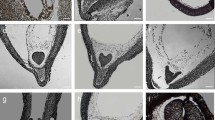Summary
Cotton fiber walls (1–2 days post anthesis) are distinctly bilayered compared to those of nonfiber epidermal cells, with a more electron-opaque outer layer and a less electron-opaque, more finely fibrillar inner layer. When probed with antibodies and affinity probes to various saccharides, xyloglucans and cellulose are found exclusively in the inner layer and de-esterified pectins and extensin exclusively in the outer layer. Ovular epidermal cells that do not differentiate into fibers have no pectin sheath, but are labelled throughout with antixyloglucan and cellulase-gold probes. Middle lamellae between adjacent cells were clearly labelled with the antibodies to de-esterified pectins, however. Similarly, cell walls of leaf trichomes have a bilayered wall strongly enriched in pectin, whereas other epidermal cells are not bilayered and are pectin poor. These data indicate that one of the early markers of fiber and trichome cells from other epidermal cells involves the production of a pectin layer. The de-esterified pectins present in the ensheathing layer may allow for expansion and elongation of the fiber cells that does not occur in the other epidermal cells without such a sheath or may even be a consequence of the elongation process.
Similar content being viewed by others
References
Anderson DB, Kerr T (1938) Growth and structure of cotton fiber. Ind Eng Chem 30: 48–54
Basra AS, Malik CP (1984) Development of the cotton fiber. Int Rev Cytol 89: 65–113
Beasley CH, Ting IP (1973) The effects of plant growth substances on in vitro fiber development from fertilized cotton ovules. Am J Bot 60: 130–139
Carpita NC, Gibeaut DM (1993) Structural models of primary cell walls in flowering plants: consistency of molecular structures with the physical properties of walls during growth. Plant J 3: 1–30
Freshour G, Clay RP, Fuller MS, Albersheim P, Darvill AG, Hahn MG (1996) Developmental and tissue-specific alterations of the cell wall polysaccharides ofArabidopsis thaliana roots. Plant Physiol 110: 1413–1429
Fujino T, Itoh T (1998) Changes in pectin structure during epidermal cell elongation in pea (Pisum sativum) and its implications for cell wall architecture. Plant Cell Physiol 39: 1315–1323
Goldberg R, Morvan C, Jauneau A, Jarvis MC (1996) Methylesterification, de-esterification and gelation of pectins in the primary cell wall. In: Visser J, Voragen AGJ (eds) Pectins and pectinases. Elsevier, Amsterdam, pp 151–172
Haigler CH, Rao NR, Roberts EM, Huang LY, Upchurch D, Trolinder NL (1991) Cultured ovules as models for cotton fiber development under low temperatures. Plant Physiol 95: 88–96
Jauneau A, Quentin M, Driouich A (1997) Micro-heterogeneity of pectins and calcium distribution in the epidermal and cortical parenchyma walls of flax hypocotyl. Protoplasma 198: 9–19
Lynch MA, Staehelin LA (1992) Domain-specific and cell-type specific localization of two types of cell wall matrix polysaccharides in the clover root tip. J Cell Biol 118: 467–479
Meinert MC, Delmer DP (1977) Changes in biochemical composition of the cell wall during cotton fiber during development. Plant Physiol 59: 1088–1097
Moore PJ, Staehelin LA (1988) Immunogold localization of the cell-wall-matrix polysaccharides rhamnogalacturonan I and xyloglucan during cell expansion and cytokinesis inTrifolium pratense L.: implications for secretory pathways. Planta 174: 433–445
Pettigrew WT, Vaughn KC (1998) Physiological, structural, and immunological characterization of leaf and chloroplast development in cotton. Protoplasma 202: 23–37
Ramsey JC, Berlin JD (1976a) Ultrastructural aspects of early stages in cotton fiber elongation. Am J Bot 63: 868–876
— — (1976b) Ultrastructure of early stages of cotton fiber differentiation. Bot Gaz 137: 11–19
Ryser U (1985) Cell wall biosynthesis in differentiating cotton fibers. Eur J Cell Biol 39: 236–256
Sabba RP, Durso NA, Vaughn KC (1999) Structural and immunocytochemical characterization of the walls of dichlobenilhabituated BY-2 tobacco cells. Int J Plant Sci 160: 275–290
Schindler TM, Bergfeld R, Van Cutsem P, von Sengbusch D, Schopfer P (1995) Distribution of pectins in cell walls of maize coleoptiles and evidence against their involvement in auxininduced extension growth. Protoplasma 188: 213–224
Schubert AM, Benedict CR, Gates CE, Kohel RJ (1973) Cotton fiber development: kinetics of cell elongation and secondary wall synthesis. Crop Sci 13: 704–709
Seagull RW (1993) Cytoskeletal involvement in cotton fiber growth and development. Micron 24: 643–660
Smallwood M, Bevan A, Donovan N, Neill S, Peart J, Roberts K, Knox JP (1994) Localization of cell wall proteins in relation to the developmental anatomy of the carrot root apex. Plant J 5: 237–246
Stewart JMcD (1975) Fiber initiation on the cotton ovule (Gossypium hirsutum). Am J Bot 62: 723–730
Van't Hof J, Sana S (1997) Cotton fibers can undergo cell division. Am J Bot 84: 1231–1235
Vaughn KC, Hoffman JC, Hahn MG, Staehelin LA (1996) The herbicide dichlobenil disrupts cell plate formation: immunogold characterization. Protoplasma 194: 117–132
Waterkyn L (1981) Cytochemical localization and function of the 3-linked glucan callose in the developing cotton fibre cell wall. Protoplasma 106: 49–67
Whistler RL, Martin AR, Conrad CM (1940) Pectic substance of cotton fibers in relation to growth. J Res Natl Bureau Stand 25: 305–308
Author information
Authors and Affiliations
Rights and permissions
About this article
Cite this article
Vaughn, K.C., Turley, R.B. The primary walls of cotton fibers contain an ensheathing pectin layer. Protoplasma 209, 226–237 (1999). https://doi.org/10.1007/BF01453451
Received:
Accepted:
Issue Date:
DOI: https://doi.org/10.1007/BF01453451




